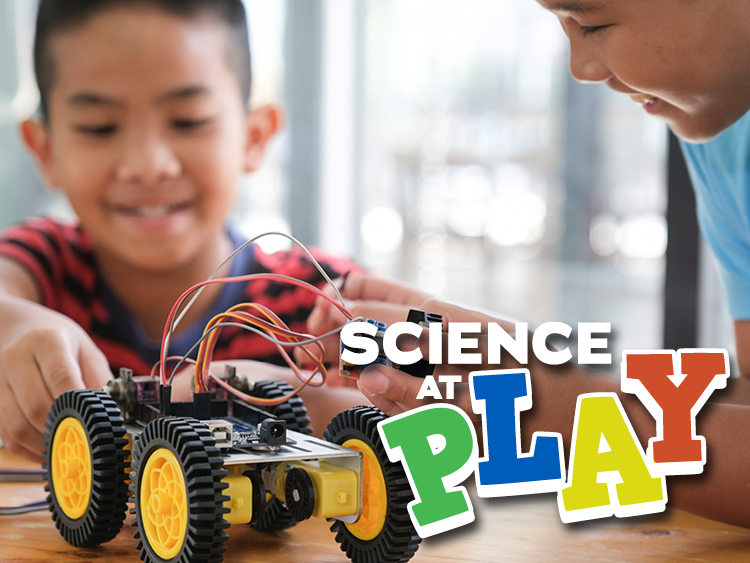So we have all heard of calories, right? They are a measurement almost everyone uses to determine how healthy a food item is. What exactly is a calorie though? Explore that and how you can find the calories of your favorite foods right at home. Keep watching to learn more.
S
Materials to Collect
- Empty soda can
- Glass rod (or something else that will not burn)
- Ring stand (or something to suspend the soda can)
- Thermometer
- Large paper clip
- Aluminum foil
- Food samples
- Matches or lighter
- A fire-safe place and safety equipment (tongs, accessible water, etc.)
Build it!
- Pour 50 mL of water into the soda can.
- Bend your paperclip and place your food sample on the end so it is freestanding. The food sample should be 2-3 grams (make sure you weigh and record the starting weight).
- Place the paperclip and food sample on a piece of aluminum foil to protect your surface from charred or burnt food.
- Suspend your soda can about 4 cm above the food sample.
- Insert the thermometer into the soda can opening and record the starting temperature of the water.
- Light the food sample on fire. As it is burning, gently stir the water in the soda can using the thermometer and keep and eye on the temperature.
- Once the food sample has stopped burning, record the highest temperature that the water reached. Then weigh the remaining food and record the weight.
Data Table
| Mass of water | 50 g |
| Starting weight of food (g) | |
| Starting water temperature (℃) | |
| Ending water temperature (℃) | |
| Ending weight of food (g) |
Calculations
- Subtract the ending weight of food from the starting weight of food to determine how much food actually burned.
- Subtract the ending water temperature from the starting water temperature to determine how much the water temperature changed.
- Multiply your change in water temperature (what you figured out during #2) by 50 g (the weight of water we started with). This gives you the amount of energy that was released by the food and absorbed by the water, or the calories!
- Now divide the number of calories you got by 1,000 (1 food calorie = 1,000 energy unit calories).
- You now know how many calories were in the amount of food that burned! Compare this to the nutritional label (you might have to adjust for a different food weight on the nutritional label).
What is the Science?
We eat food to give us energy. A calorie is a unit of energy – it tells us how much energy is stored in any given food. The way scientists figure out how many calories are in a food is by measuring the energy that can be released. They do this using a calorimeter. This is a scientific tool that measures energy by using water to absorb the energy released by a burning food sample. The amount of energy absorbed by the water can be measured, and this tells us how much energy the food released!
Ask Your Young Scientists
- What foods might contain more calories? Which might contain less?
- Can you think of times when it felt like eating food gave you energy?
- What food should we try next?
- Why is it important for us to eat food?
This content was made possible in part by the Institute of Museum and Library Services.

Aoife Ryle is a STEM Educator at the Connecticut Science Center. In addition to working with school groups, she works with our Teen Program, Overnights department, and shoots weekly science segments for WFSB. She has a degree in Bioengineering from the University of Maine and has a personal interest in the life sciences and engineering which makes bioengineering a perfect crossover.

Mark Dixon is a meteorologist on WFSB Channel 3 Eyewitness News and a host of the weekly Science Sunday segments with the Connecticut Science Center. He has been nominated for several Emmy awards for weather anchoring and has won awards from the Connecticut Associated Press Broadcaster’s Association and the American Meteorological society.


